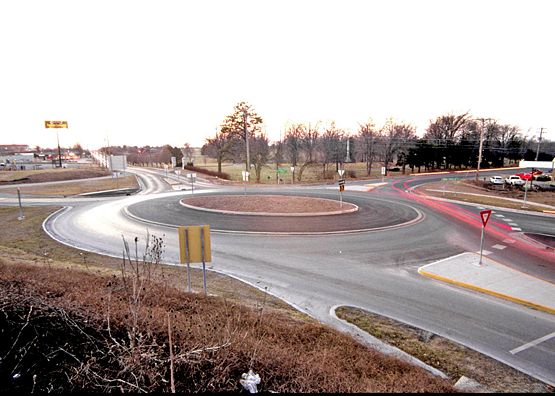233.3 Roundabouts

A roundabout is a circular traffic intersection featuring yield control on all entering roadway legs, one-way continuous flow within the circulatory roadway, channelization of the approaching roadways, and appropriate geometric curvature to keep circulating speeds low. Roundabouts may contain as few as three legs; however, roundabouts with more than four legs are not uncommon. Typical roundabout terminology with key geometric elements is available.
This article is currently under comprehensive revision to more accurately reflect the contents of TRB’s NCHRP Report 1043, Guide for Roundabouts. In the interim, that guide is considered the location selection, design and layout guidance for MoDOT roundabouts.
| Additional Resources |
In order to ensure Missouri’s roundabouts are designed according to the current practice and provide for a functional and operational analysis, all preliminary roundabout layouts shall be submitted to both the Highway Safety and Traffic Division and the Design Division for review prior to detailed design.
Public acceptance of roundabouts has often been found to be one of the biggest challenges when planning to install a roundabout. Without adequate education, the public will often have a natural hesitation or resistance against changes in their driving behavior and driving environment.
A proposal to install a roundabout should include a wide variety of techniques to inform and educate the public about roundabouts. Some of these include public meetings, informational brochures and videos, and announcements in the newspaper or on television and radio. A public involvement process should be initiated as soon as practical, preferably early in the planning stages of a project while other intersection forms are also being considered.
